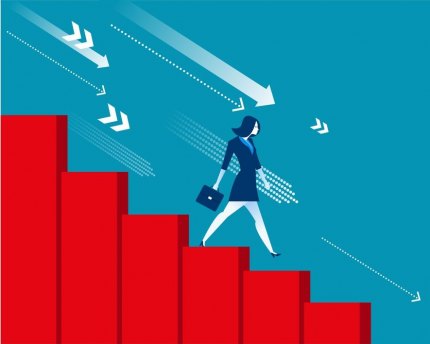What is an inverted yield curve?

Everyone knows what a recession is, but inverted yield curve sounds like a bad turn on the highway. And, in a way, it is. Economists report that an inverted yield curve is known to forecast a recession. Here's an explainer, along with links for further study:
What the heck is an inverted yield curve? Let's start with a basic yield curve. This is defined as a graph "showing the term structure of interest rates by plotting the yields of all bonds of the same quality with maturities ranging from the shortest to the longest available," according to Barron's Dictionary of Business Terms (Barron's Educational Series; 1994). An inverted yield curve is an "unusual situation where short-term interest rates are higher than long term rates."
Does that mean a recession is coming? On Aug. 14, National Public Radio reported, "The yield on the benchmark 10-year Treasury note fell below 2-year Treasury (notes) for the first time since 2007. In other words, you would get a higher interest rate for government debt that matures in two years than in 10 years." The news organization explained that "each of the last seven recessions, dating to 1969, was preceded by the 10-year falling below the two-year."
So, are there other clues that tell us the country is headed for a recession? This week, Bank of America noted that "three of five economic indicators that track business cycles — auto sales, industrial production and aggregate hours worked — are at levels reached right before previous recessions," according to a CNBC report.Also, consider that one definition of an economic recession is a "downturn in economic activity, defined by many economists as at least two consecutive quarters of decline in a country's gross domestic product," Barron's Dictionary of Business Terms recounts. By this definition, it's a recession if the downturn lasts six months.
The National Bureau of Economic Research spells out the indicators that lead economists to believe a recession is coming. "A recession is a significant decline in economic activity spread across the economy, lasting more than a few months, normally visible in real gross domestic product, real income, employment, industrial production and wholesale-retail sales. A recession begins just after the economy reaches a peak of activity and ends as the economy reaches its trough. Between trough and peak, the economy is in an expansion. Expansion is the normal state of the economy; most recessions are brief and they have been rare in recent decades."
What's the difference between a recession and an economic depression? A depression is a more sustained economic crisis. Barron's defines it as an "economic condition characterized by a massive decrease in business activity, falling prices, reduced purchasing power, an excess of supply over demand, rising unemployment, accumulating inventories, deflation, plant contraction, public fear and caution."
Is there anything we can do about it? An article about recessions on the Economic Policy Institute website notes that the "common root cause of each recession is a contraction of economywide spending (or aggregate demand) relative to the economy’s potential productive capacity. As consumers (households, businesses, or governments) cut back their spending, it doesn’t make sense for producers to keep generating as much economic output."But it is possible to get things moving again. Policymakers should use every effective tool to end a recession as quickly as possible, the institute adds. "To be effective, these tools need to boost spending by households, businesses or governments to relieve the aggregate demand shortfall that is the fundamental cause of recessions."
To know more:
- Barron's Dictionary of Business Terms: (Barron's Educational Series; 1994).
- CNBC: Bank of America raises chance of a recession to 1-in-3 in the next 12 months, by Maggie Fitzgerald.
- Economic Policy Institute: What should we know about the next recession? By Josh Bivens.
- National Bureau of Economic Research: The NBER's Recession Dating Procedure.
- National Public Radio: Dow Tumbles 800 Points As Bond Markets Signal Recession, by Chris Arnold and Uri Berliner.
Like us on Facebook and tell us what you think.

